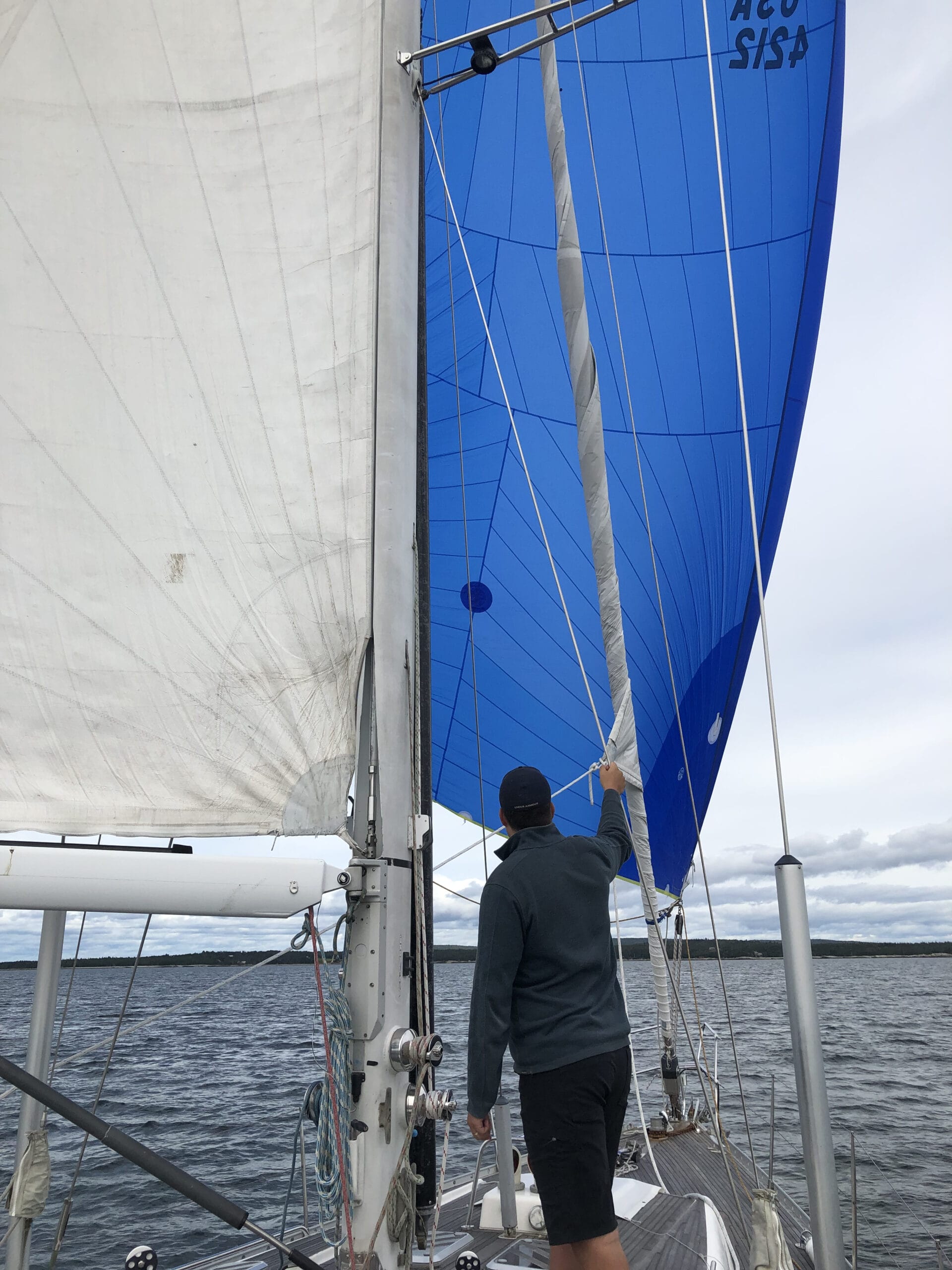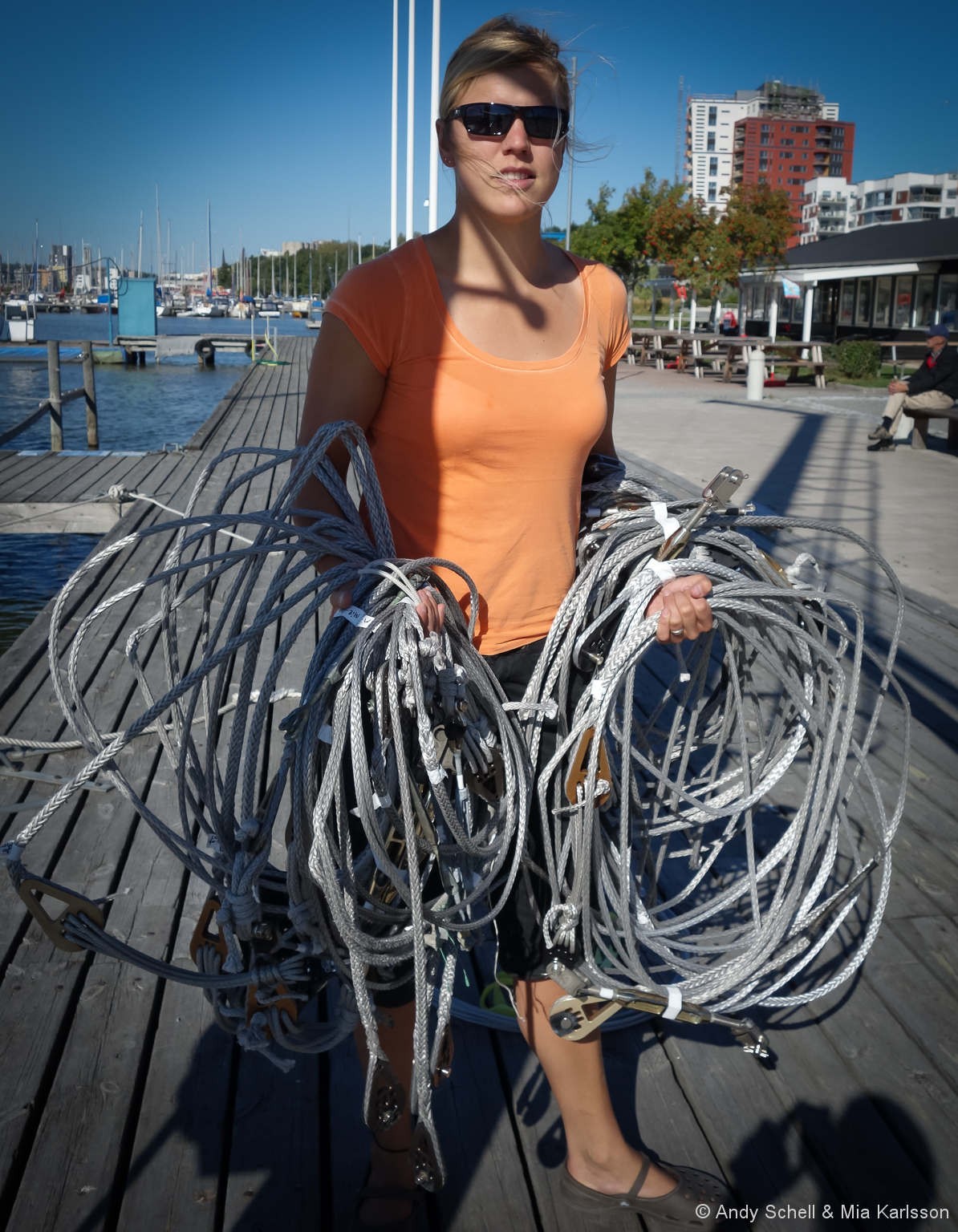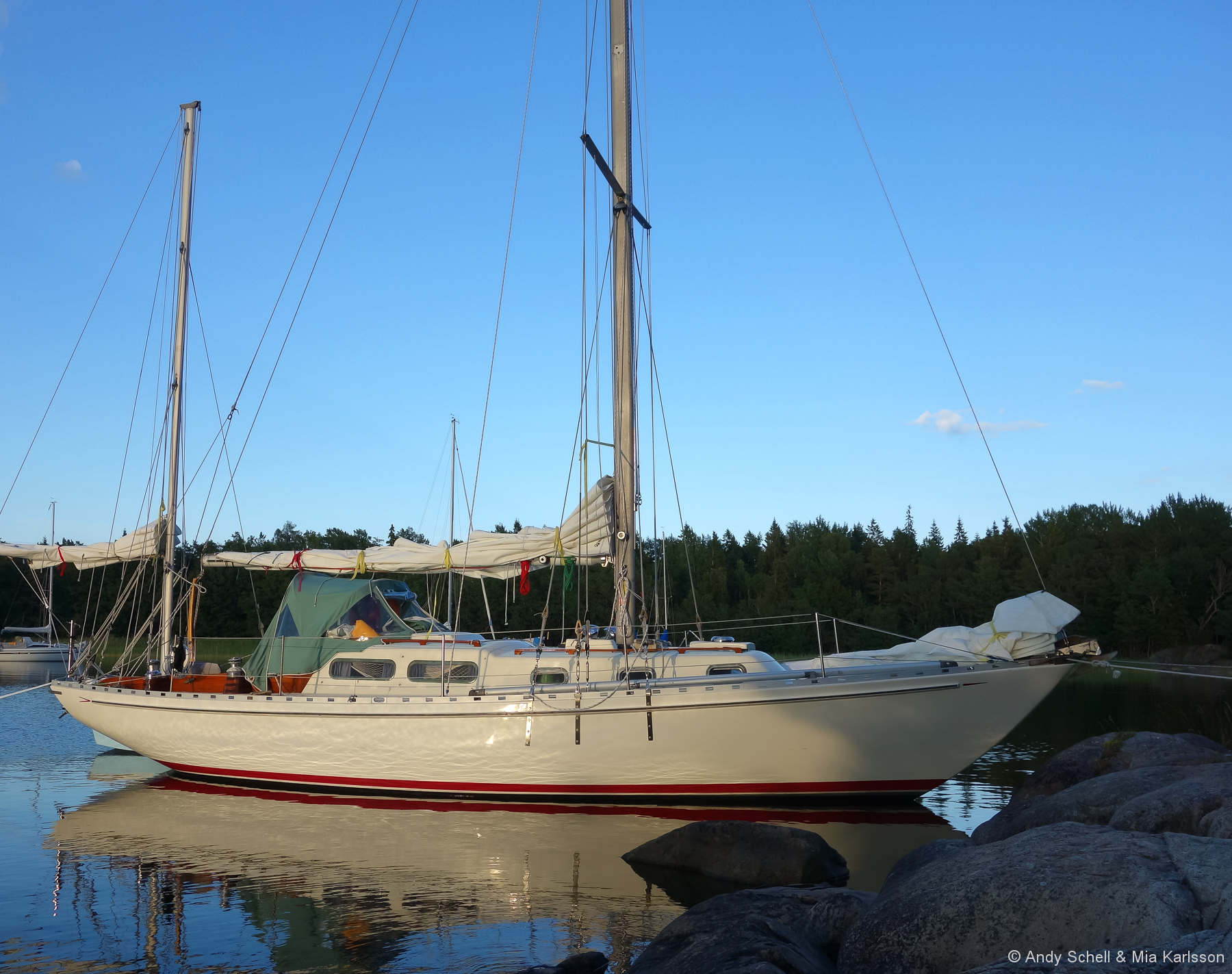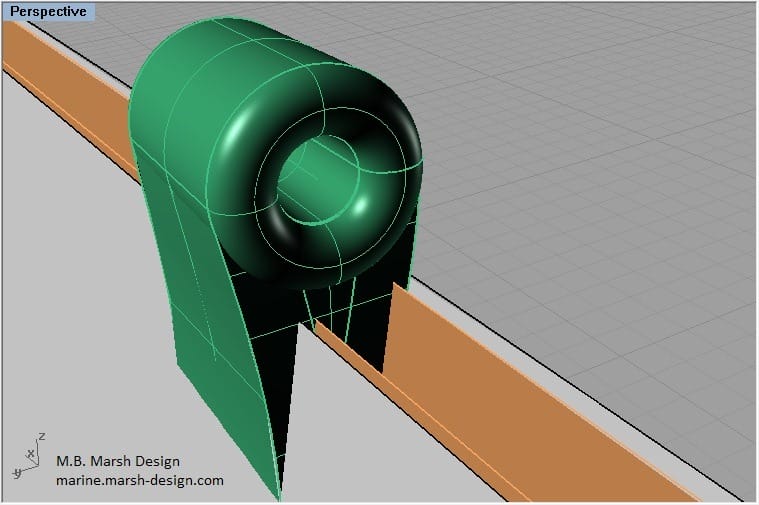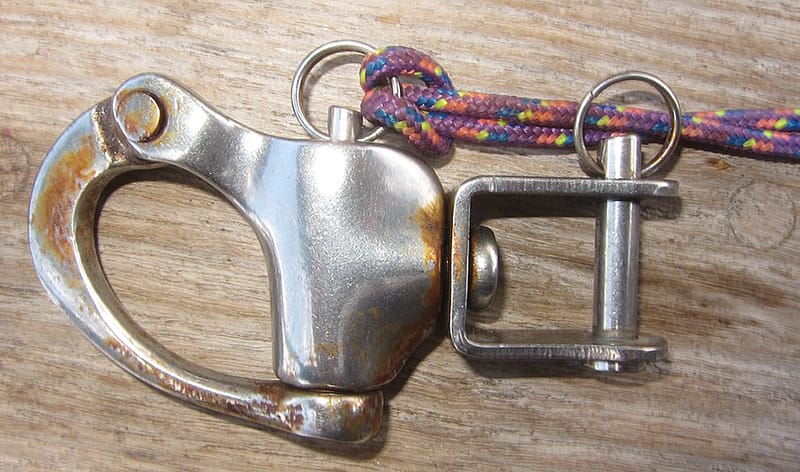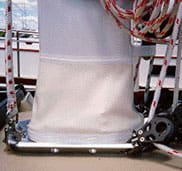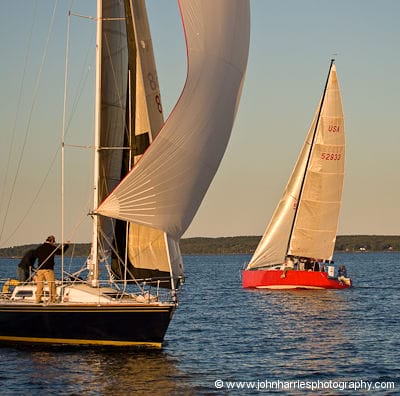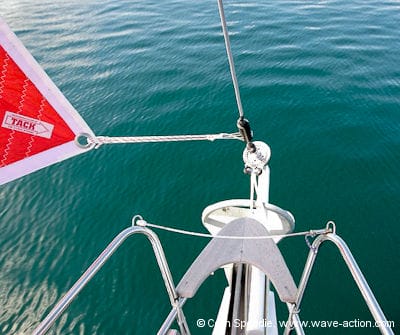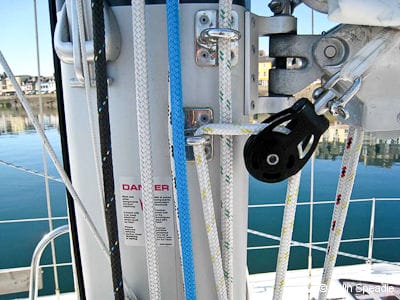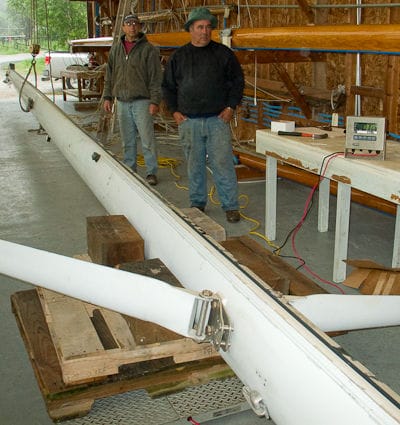Rigging/Sails
Click for TOC or scroll down for details
Articles in this topic:
- In-Boom Roller Furling Demonstration Video
- John Goes Sailboat Racing and Learns Stuff
- Roller Furling Headsail Risks and Rewards
- Designing For Dux Rope Rigging—A Paradigm Shift—Part 2
- Dynice Dux, Part 1: Practical Low-Stretch Rope Rigging For Offshore Sailboats
- A Better Chain Plate
- Spoiling The Ship For a Ha’penny Worth of Tar
- Waterboot Mast/Deck Seal
- How We Buy Sails
- Spinnakers—Not Getting In A Twist
- Q&A: Un-Stayed Masts
- Q&A: Carbon Boom
- Mainsail Reefing Blues
- The New Mast, Why?
- Q&A: Rod Rigging Replacement
- Sail Area: How Much and How to Distribute It
- Navtec Hydraulics
- Maloney Marine Rigging
- Harken Fittings
-
In-Boom Roller Furling Demonstration Video
67 CommentsReading Time: 2 minutesFreeRead more: In-Boom Roller Furling Demonstration VideoAn in-depth, narrated demonstration of hoisting, reefing, un-reefing and striking the mainsail with a LeasureFurl® in-boom system.
-
John Goes Sailboat Racing and Learns Stuff
22 CommentsReading Time: 6 minutesMembersRead more: John Goes Sailboat Racing and Learns StuffJohn went racing on a big Swan and learned a lot about asymmetrical spinnakers, accompanied by a big piece of humble pie.
-
Roller Furling Headsail Risks and Rewards
45 CommentsReading Time: 6 minutesMembersRead more: Roller Furling Headsail Risks and RewardsAn interesting question from a member gets John thinking about how to handle headsail roller furling failures, and risk versus reward on a general basis.
-
Designing For Dux Rope Rigging—A Paradigm Shift—Part 2
41 CommentsReading Time: 7 minutesMembersRead more: Designing For Dux Rope Rigging—A Paradigm Shift—Part 2Andy takes a deep dive into when, if and how, to re-rig with Dux high modulus Dyneema rope. Techniques, advantages and disadvantages, it’s all here.
-
Dynice Dux, Part 1: Practical Low-Stretch Rope Rigging For Offshore Sailboats
35 CommentsReading Time: 4 minutesMembersRead more: Dynice Dux, Part 1: Practical Low-Stretch Rope Rigging For Offshore SailboatsAndy’s a big fan of Dux high modulus rope standing rigging. He takes a look at what Dux is and some really interesting uses for it.
-
A Better Chain Plate
63 CommentsReading Time: 3 minutesFreeRead more: A Better Chain PlateWhile thinking about the Adventure 40 I have worried most about two areas: chain plates and the rudder. Let’s look at a way to fix the former right.
-
Spoiling The Ship For a Ha’penny Worth of Tar
24 CommentsReading Time: 3 minutesFreeRead more: Spoiling The Ship For a Ha’penny Worth of TarBefore any long passage I conduct a careful examination of all of our standing and running rigging, checking particularly for chafe and any sign of corrosion – better to do it well in advance than wait until the last minute when there’s no time to effect repairs. So before we left the Canaries I went […]
-
Waterboot Mast/Deck Seal
14 CommentsReading Time: 2 minutesFreeRead more: Waterboot Mast/Deck SealNo leaks down the exterior of the mast below the partners. Period. That’s what Waterboot promises and what it delivers.
-
How We Buy Sails
18 CommentsReading Time: 4 minutesFreeRead more: How We Buy SailsWhy do we give so much thought to our sails? Well, first, as we talked about in this post, good sails equal good speed and good speed equals more fun. Speed also contributes to safety because you are vulnerable to bad weather for less time. Finally, if your sails are slow in normal weather, they […]
-
Spinnakers—Not Getting In A Twist
17 CommentsReading Time: 3 minutesFreeRead more: Spinnakers—Not Getting In A TwistColin shares the reasons they opted for an asymmetric spinnaker when choosing sails for their new OVNI, Pélerin.
-
Q&A: Un-Stayed Masts
5 CommentsReading Time: < 1 minuteFreeRead more: Q&A: Un-Stayed MastsQuestion: I am curious if you are keel stepped or deck stepped. If keel stepped, could you get away without stays since the aluminum deck could be reinforced enough to hold the mast upright? You could keep running backstays in place for heavier winds.
-
Q&A: Carbon Boom
0 CommentsReading Time: < 1 minuteFreeRead more: Q&A: Carbon BoomQuestion: Did you change your boom to carbon fiber or just your mast?
-
Mainsail Reefing Blues
5 CommentsReading Time: 4 minutesFreeRead more: Mainsail Reefing BluesColin takes a balanced look at mainsail handling systems including single line reefing from the cockpit and permanently mounted integrated sail covers. These systems would seem to save trouble, but how well do they really work in practice? Read on to find out.
-
The New Mast, Why?
4 CommentsReading Time: 3 minutesFreeRead more: The New Mast, Why?The most expensive and stressful part of our latest refit to “Morgan’s Cloud” was the replacement of her mast. So why did we do it? Simple, peace of mind.
-
Q&A: Rod Rigging Replacement
22 CommentsReading Time: < 1 minuteFreeRead more: Q&A: Rod Rigging ReplacementQuestion: Our Swan 51 is at Morris Yachts for a mini refit this winter and my plan, in addition to everything else, is to start to replace some of the existing rod rigging. It turns out that the rod is 24 years old. Navtec says it should be replaced every 11 years or 30,000 miles. […]
-
Sail Area: How Much and How to Distribute It
7 CommentsReading Time: 2 minutesFreeRead more: Sail Area: How Much and How to Distribute ItSo just how much sail area should a voyaging boat have and how should it be distributed? We examine those two issues in this question and answer chapter.
-
Navtec Hydraulics
3 CommentsReading Time: < 1 minuteFreeRead more: Navtec HydraulicsMorgan’s Cloud was fitted with an hydraulic vang and with hydraulic backstays when we bought her. Initially we were skeptical, feeling that such complexity had no place on a cruising boat, especially one that sails to remote places.
-
Maloney Marine Rigging
3 CommentsReading Time: < 1 minuteFree -
Harken Fittings
1 CommentReading Time: < 1 minuteFree


